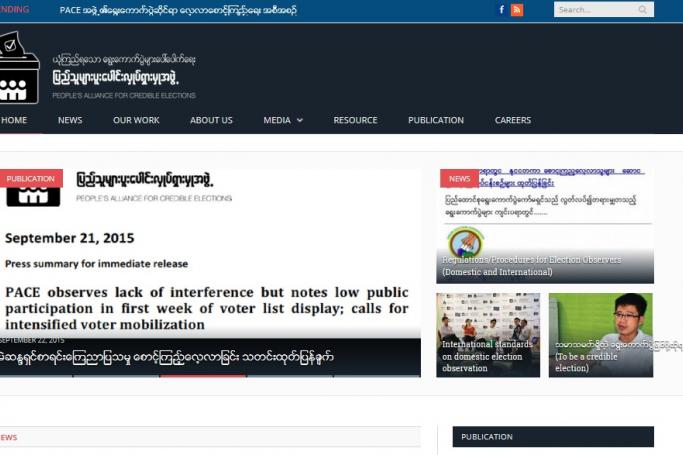Starting on September 14, the People’s Alliance for Credible Elections (PACE) deployed 110 Long Term Observers to 110 townships across the country to observe the national voter list display process the organisation said in a statement on 21 September.
‘From September 14-20, PACE observed 421 display centres across all states and regions in a roughly equal number of urban and rural display locations. In the first week of the display, observers found that the process was largely free from intimidation or interference and that most centres had the materials they needed. However, PACE observers found that many locations were not open during officially-designated hours. PACE also noted a relatively low level of voter participation, low presence of political parties and CSOs in the process, as well as a lack of voter education materials around many display centres. Looking forward to the final week of the process, PACE recommends that the UEC, political parties and CSOs intensify voter mobilization and that the UEC ensures that all display locations remain open during official hours.’
The statement continues, ‘According to PACE’s methodology, observers stayed in display locations for the entire day to observe the whole process. PACE observers did not check the names or data on the voter list. PACE observers deployed each day of the display period except for September 18th.
PACE observers witnessed very few cases of intimidation or of interference by unauthorized people. Positively, 92% of centres observed had all required forms and materials. However, observers found that 19% of centres observed were not open during all official times designated by the UEC.
PACE is concerned that observers saw low levels of voter participation and outreach. In centres observed, PACE saw low levels of voter turnout and low levels of voters making changes or additions to the list. At approximately 42% of the displayed centres observed, PACE did not see voter education material and activities near the centre. Furthermore, political parties and civil society representatives were not present at 87% and 79% of observed centres respectively.
Overall, PACE is encouraged by the lack of interference in the process and the fact that most centres are equipped with necessary materials. However, PACE urgently recommends measures to increase voter participation, including keeping centres open during official hours and intensifying voter mobilization campaigns.
PACE is a nonpartisan, election observation organization working in all states and regions in Myanmar to promote better elections. In the 2015 Elections, PACE will be deploying more than 2000 STOs (Short Term observers) on Election Day across the country and around 130 LTOs for national voter list display and campaign observation. PACE will be using “Systematic observation” methodology on Election Day, which it has been using in more than 50 countries. PACE will continue its observation of the final week of the voter list display and will share final findings with the public once the process is complete.’
Lack of interference, but low public participation - PACE
23 September 2015
Lack of interference, but low public participation - PACE












